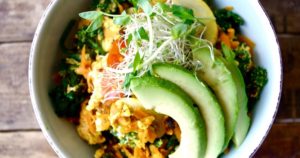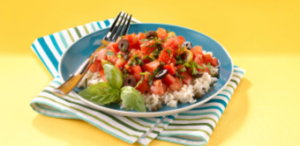
In a nutshell, the term aerobic means “with oxygen.” Aerobic exercise and activities are also called cardio, short for “cardiovascular.” During aerobic activity, you repeatedly move large muscles in your arms, legs and hips. Your heart rate increases and you breathe faster and more deeply. This maximizes the amount of oxygen in your blood and ultimately helps you use oxygen more efficiently.
How well you use oxygen is called your aerobic capacity. When your aerobic capacity is high, your heart, lungs and blood vessels efficiently deliver large amounts of oxygen throughout your body. As a result, you feel more energized and don’t tire as quickly.
If you are a beginner to exercise, start with low to moderately intense cardio activities, so you can do them for long periods of time and gain many health benefits. Common examples include walking, bicycling, swimming, dancing and water aerobics, but don’t limit yourself: You can choose any activities you enjoy, such as canoeing, in-line skating, golfing or martial arts.
Benefits
If you haven’t gotten enough aerobic exercise, you may use your entire aerobic capacity while walking up a flight of stairs. You’ll realize this when you get to the top and feel out of breath. But if you’re fit, you’ll have no problem because your aerobic capacity is greater. That’s just one example of how you can benefit from cardio exercise.
Cardio exercise and activities can also:
- Strengthen your heart and muscles
- Burn calories
- Help control your appetite
- Boost your mood through the release of endorphins, which are feel-good chemicals released by your brain
- Help you sleep better at night
- Reduce arthritis pain and stiffness through joint movement
- Help prevent or manage high blood pressure, heart disease and diabetes
No matter what your age, aerobic exercise will help you in your daily activities and increase your stamina and endurance.
Start slowly
If you’re a beginner, start slowly. You might walk five minutes in the morning and five minutes in the evening. Gradually add a few minutes to each session and then pick up the pace a bit. Soon you could be walking briskly for 30 minutes a day. Also consider hiking, cycling, jogging, rowing, elliptical training — any activity that increases your breathing and heart rate.
Take a three-pronged approach
Include three elements in your workout:
- Warm-up. Before each session, warm up for five to 10 minutes to gradually rev up your cardiovascular system and increase blood flow to your muscles. Try a low-intensity version of your planned activity. For example, if you plan to take a brisk walk, warm up by walking slowly.
- Conditioning. At your own pace, work up to at least 30 minutes of cardio a day to develop your aerobic capacity by increasing your heart rate, depth of breathing and muscle endurance.
- Cool-down. After each session, cool down for five to 10 minutes. Stretch your calf muscles, quadriceps (upper thighs), hamstrings, lower back and chest. This after-workout stretch allows your heart rate and muscles to return to normal.
Moderate activity should cause you to breathe faster and feel like you’re working. But if you experience unusual pain or alarming symptoms during exercise, stop immediately and seek medical attention.




 When ordering food at a restaurant, do you know which items may be loaded with fat and calories? Unlike when you’re grocery shopping, the foods in a restaurant may not have nutrition labels listing their fat grams and calorie content.
When ordering food at a restaurant, do you know which items may be loaded with fat and calories? Unlike when you’re grocery shopping, the foods in a restaurant may not have nutrition labels listing their fat grams and calorie content.





